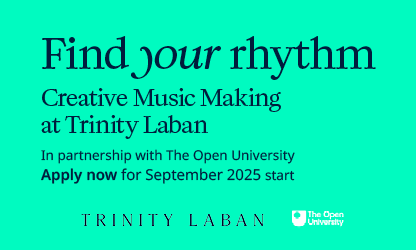Understanding and using the Census Comparison Survey
Making Music’s Census Comparison Survey: what it is, how to use it, and why you should give it a go.
How well do you know the demographic make-up of your group’s membership or audience? What about the population of your local community?
Making Music has created a tool that allows you to gather this information anonymously from people who interact with your group and compare it to data about your area from the UK census. This will help you see how your group reflects the local population. We have trialled it with the four groups taking part in our INCLUDE programme and it’s now available for all Making Music members to use.
What is it?
The Census Comparison Survey is an online survey that you can use in your music group. It anonymously collects demographic information such as age, ethnicity, disability, and sexuality. It’s accompanied by guidance on how to find data from the census and the survey questions are designed so that you can easily compare the two.
Why use it?
Understanding who is already engaging with your music group and who isn’t, will give you a baseline to work from, and help you identify where to focus your recruitment and marketing efforts if you want to reach new people.
Even if the results aren’t unexpected, you’ll get factual evidence of who you’re reaching and who you’re not. You can’t make assumptions about people’s ethnicity, disability, age or any other aspects of their identity so a survey is the only way to get accurate information. Plus you might find the data useful if you are applying for funding or reporting on the reach of your work.
One of the INCLUDE groups said:
'Although we learned little new about our audience, the survey was very useful in a couple of ways, […] it helped us to focus more clearly on what our objectives should be and gave us a baseline to work from for our age profile [of our audience].'
Case Study: Great Bowden Recital Trust (GBRT)
Here’s an example of a group that used the Census Comparison Survey, and what they decided to do based on some of the results.
GBRT conducted the Census Comparison Survey across all six of their ensembles in October 2023. One of the key things the survey highlighted was that men were underrepresented across their ensembles. In response, they decided to to hold a ‘Men Sing for Movember’ project in autumn 2024. This will specifically encourage men to get involved with their choir by taking part in a men-only group for a short period of time and to raise money for ‘Movember’ at the same time.
'It was interesting to see the demographics of the groups, particularly the less visible characteristics such as sexuality, education, and employment.'
How to use it
Share the survey with everyone that you would like to collect this data from with an explanation about why you’re asking them for the information. You could do this by:
- emailing the link round to your members
- printing out QR codes linking to the survey and asking people to fill it in during a break in rehearsal or a concert interval
- asking people to complete it when they buy a concert ticket
- bringing a couple of tablets or laptops to a concert or rehearsal to help people who don’t have a smartphone
- adding the link or a QR code into your concert programme.
Once people have completed the survey, send an email to us to let us know. We'll provide an anonymised spreadsheet of the responses. You can then compare this to data from the UK Census – find guidance for this here.
Collecting and analysing demographic data is just one part of getting to know your group and your community. The Census Comparison Survey is a tool to get you started on this, but your local knowledge and relationships are also key to getting to know your community better.
Until March 2025, you can get personal support from our Inclusion Focus Programme Manager Elizabeth Palmer, so now is a great time to give this a go in your group. If you’d like to have a chat about how you can use the survey in your group or want any support with the process, you can get in touch by emailing include@makingmusic.org.uk
For further information about the Census Comparison Survey, visit our resource page



